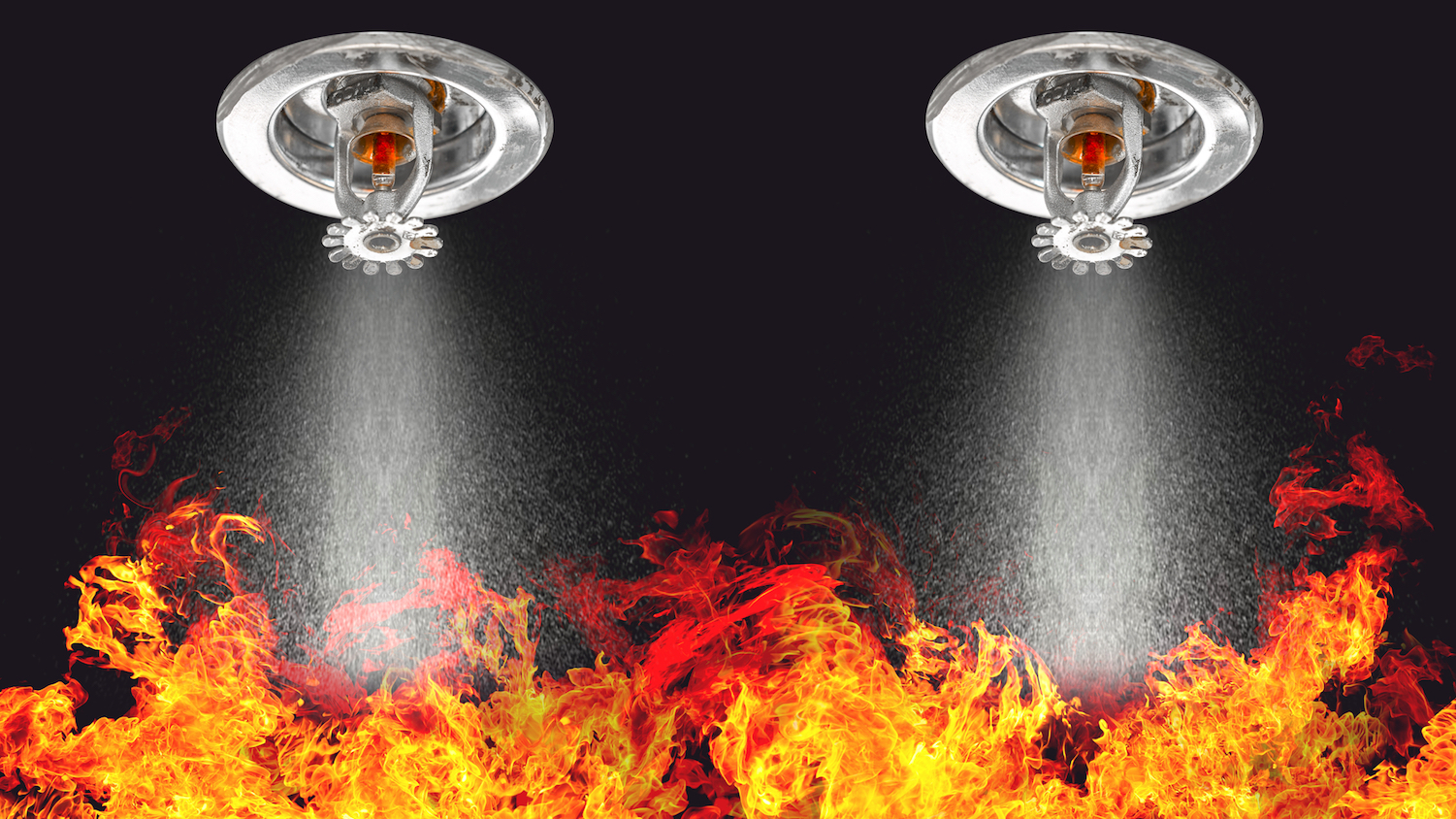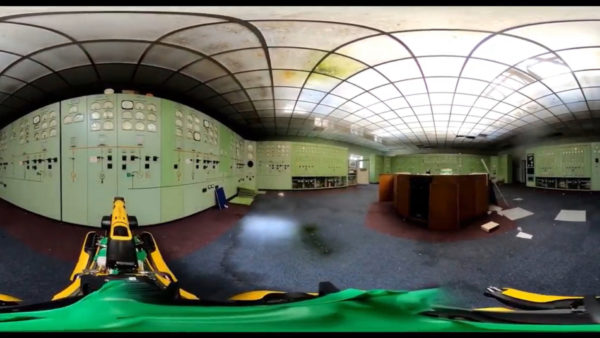
A national standard that stems from a recommendation in Dame Judith Hackitt’s Independent Review of Building Regulations and Fire Safety has now been published by the BSI.
The new standard provides recommendations for the management, presentation and exchange of fire safety information using digital information management processes has now been published following a lengthy consultation process.
Fire safety expert Aman Sharma, MD of Totus Digital and deputy chair of the Building Regulations Advisory Committee, is chair of the BSI committee that has developed the new standard – BS 8644-1 Digital management of fire safety information.
Here, he talks more about its development, the impact he hopes it will have, and how collaboration with the UK BIM Alliance, buildingSMART UK & Ireland and others will be important in taking the next step in formalising a schema for fire information.
Tell us more about the new standard
Aman Sharma (AS): The British Standard is a code of practice that manages the development and exchange of fire safety information so that it is accessible, available and usable by all parties throughout the lifecycle of a built asset. This includes briefing, planning, design, construction, handover, occupation and emergency response stages.
It dovetails with the information mandate and UK BIM Framework as set out in the BS EN ISO 19650 series, and with the principles of the golden thread of information cited in the Building Safety Act, which will contain the evidence base to demonstrate that higher-risk buildings comply with the functional requirements of the building regulations.

“The fire safety industry has been absent of any guidance relating to information management for a very long time.”
Why is it necessary?
AS: The fire safety industry has been absent of any guidance relating to information management for a very long time. Fire engineers, consultants, risk assessors, system engineers, and recipients or contributors to fire safety information during a built asset’s lifecycle have never consistently applied a framework to manage fire safety information throughout the lifecycle of a built asset.
Regulation 38 under the English Building Regulations mandates the handover of fire safety information in certain scenarios, and we still had this fundamental and systematic problem where it wasn’t happening in a consistent or effective way – Dame Judith Hackitt highlighted this very clearly in her report.
The purpose of BS 8644-1 is to set the first stepping stones towards better management of information related to fire safety.
What’s happened since the consultation in February last year?
AS: We received just shy of 800 comments – which is almost three times more than BSI would normally receive. But it was always going to be a difficult marriage bringing the fire safety and information management industries together. I would say there has been little information management taking place within the fire safety space – even when there has been a regulatory requirement to do so – and little consideration about fire safety within information management.
It was clear that we would have an uphill task to reform years of mismanagement of fire safety information, while simultaneously educating the fire safety industry on the UK’s approach to information management. There had to be alignment and commonality between the two industries and it was clear the well-established processes set out within the UK BIM Framework offered the baseline for this.
However, this has taken some delicate negotiation and compromise. One of the decisions I took immediately after the public consultation was to bring on board more expertise from the UK BIM Alliance, for which I am incredibly grateful.
I was also clear that going forward we would continue to need the support of the UK BIM Alliance and indeed of buildingSMART to continue the development of some key introductory concepts. However, I also want to emphasise that, as a committee, we had to listen to a wide range of perspectives and views, and compromise was a necessary part of the comment resolution, as in all standards development.
Why should you use BS 8644-1 Digital management of fire safety information?
AS: Better information management is absolutely fundamental to enabling better levels of building safety. Again, we need only reflect on Dame Judith Hackitt’s analysis to remind ourselves of the value of adopting some of the rigour applied in high-hazard industries – such as safety cases.
If we consider a typical project, it’s often been the case that fire safety ‘deliverables’, such as fire strategies and fire risk assessments, are developed with no real consideration as to how that information will be used to inform better levels of building safety.
“It’s often been the case that fire safety deliverables are developed with no real consideration as to how that information will be used to inform better levels of building safety.”
We have to think differently as fire safety professionals, we create fire safety information, and so we should, we’re the experts after all! But we need to be asking ourselves now how that information should be used throughout the lifecycle of a built asset to enable better levels of safety for residents and occupants of the built environment. This is where learning how to manage our information, and starting to develop best practice seen elsewhere is important.
A clear and agreed Fire Safety Information Management Strategy (FSIMS) can be developed in accordance with BS 8644-1 that can be used to aid the development of, for example, design, construction and retrospective operational fire strategies. The FSIMS can define the information that is required at each stage of the project, and the process by which that information should be managed: a golden thread for fire safety information, if you will.
Combined with other key fire safety standards that are cognisant of today’s issues, such as BS 9997 – Fire risk management systems, we can begin to approach fire safety in the way perhaps we should always have been doing, with a lifecycle risk management philosophy, and with relevant and accurate information at the centre.
What are the key points and processes set out in the new standard?
AS: BS 8644-1 sets out a number of key principles.
The first is to establish when fire safety information should be exchanged. There are seven information exchange points, which users can adopt on their own projects to any plan of work of their choosing.
Second, we want to encourage the use of the UK BIM Framework and the ISO 19650 series, but recognise that significant parts of the fire safety industry will need time to develop their understanding in this space.
The compromise has been to set out two options to adopt the recommendations. The first is using processes recognisable through the adoption of the UK BIM Framework and the principles of better information management. The second, for those not familiar with the UK BIM Framework, is to make best use of recognisable contractual documentation typically used today. However, this does not provide the structure and tested rigour of the UK BIM Framework, so we see this approach as a stop gap while users ready themselves to adopt the Framework.
As part of introducing the concept of managing information better to an industry that is not familiar or has struggled with this in the past, BS 8644-1 presents a new concept that is referred to as FIREie. At a high level, and in principle, it can act as an information exchange dataset for fire safety information that, at least for the moment, can act as a single repository for fire safety information deliverables.
The way forward
A joint statement from Aman Sharma, Dr Anne Kemp, chair of the UK BIM Alliance, and Casey Rutland, vice chair of the UK BIM Alliance and chair of buildingSMART UK & Ireland.
"It’s worth repeating what Aman states in his executive briefing for BS 8644-1, that the standard “has been developed to ‘bridge the gap’ between the fire safety and information management sectors respectively. As such, it should not be read as a fire safety or information management standard, but as a fire safety information management standard."
"We would like to emphasise that together we regard this as a first preliminary step in bringing the two worlds together – and work remains to provide the wherewithal and the tools to do this.
"Prior to publication of the standard, the principal authors of BS 8644-1 had already begun to establish pathways to develop a proper schema for fire safety information, and we are pleased to confirm that discussions have already started on how best to facilitate this.
"There is fantastic expertise around the industry to help with this, and the UK BIM Alliance and buildingSMART UK & Ireland will be pleased to support and enable this work. Those active in this area can expect a call shortly to move this forward."
The aim is to enable fire professionals and asset owners to understand and set out the necessary fire safety information deliverables, and how to name and structure their information accordingly. How this is done in a standardised way across the industry needs work – and it is important that we bring fire professionals and asset owners along with us as we work towards this in conjunction with our information management colleagues.
In the meantime, FIREie can act as a repository for traditional fire safety information deliverables that are created throughout the lifecycle of an asset – these may be files such as PDF, JPEG, PNG, CAD drawings etc – thereby giving us a single source for a project or organisation’s fire safety information.
The approach taken within this part of BS 8644, I believe, allows us to move the fire safety industry forwards in a pragmatic and achievable way, introducing the high level principles of information management as set out by the UK BIM Framework, while preparing them for the rigours of a standardised schema, and allowing us to develop that schema with the collaboration of both the fire safety and the information management industries.
We are very aware that FIREie does not have a dedicated, defined schema, or Model View Definition yet. Work planning is in train to begin developing this. But in the meantime, the FIREie concept will be critical in helping my colleagues in the fire safety industry to familiarise themselves with the UK BIM Framework and to develop their information management capabilities.
Until there is a schema in place, FIREie will likely need to be established on a project-by-project basis. This will ensure that the information being exchanged is relevant, proportionate and accessible, in line with the requirements within BS 8644-1. To help establish FIREie, BS 8644-1 provides examples and suggested properties you may wish to use, but these are not a requirement of conforming to this code of practice. This was done intentionally to provide support to practitioners in lieu of a dedicated schema.
During this time, we will be working in conjunction with the UK BIM Alliance and buildingSMART UK & Ireland to advance development of FIREie. I have already begun planning with the senior leadership team of the Alliance to scope the work and engagement that will be required to develop an appropriate schema for FIREie – it’s one of the main reasons I ensured that this was a multi-part series of British Standards.
Don’t miss out on BIM and digital construction news: sign up to receive the BIMplus newsletter.
Comments
Comments are closed.















So if I read this right:
1. BS8644 helps with information exchange yet doesn’t provide a viable solution, that is yet to come?
2. Its now the UKBIMAlliance that will solve the schema challenges introduced by BS8644 and its incomplete FIREie proposal. When will this be done.
3. We still dont have a solution of exchanging fire data, only that BS8644 states it is important.
So when are we going to get the long awaited exchange schema which was promised in 2020 that we desperately need to for me to comply with clients demanding it today now BS8644 was published?
Responding to the other comments, soon there will be an article released highlighting the challenges and how we must move forward. Like those comments above, I accept that this article states the standard is incomplete, however, the standard itself does not echo this conclusion as it recommends its code of practices, which contains significant errors and technical holes be used on adopting projects from today. I look forward to the future where this will be resolved, until then we are left with a situation of a rock and hard place when considering its adoption, eager to improve fire safety using standards, just not those that raise more challenges than solutions.